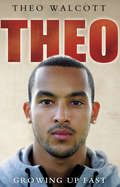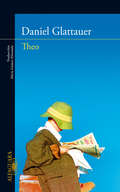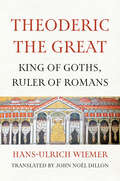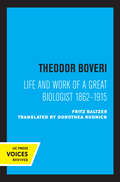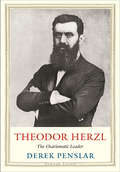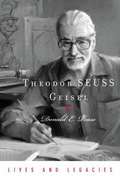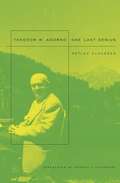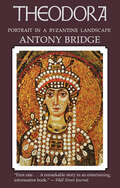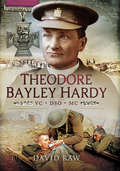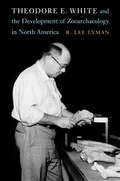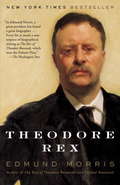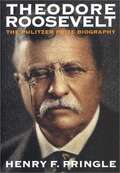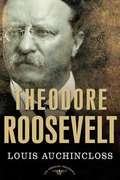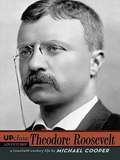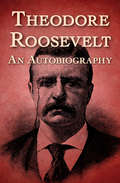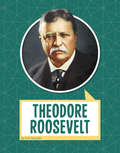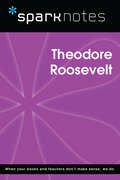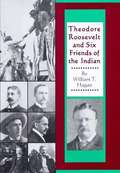- Table View
- List View
Thendral: Vol. 13, Issue 12, November 2013
by MadhurabharathiThe highlights of this issue are: Interviews with Ms. Vairamani who is working as a crematorium assistant, breaking the conventions and traditions of Hinduism, and Ms. Nirupama Vaidyanathan, a Tennis player; a biographical sketch of Raghavaiyengar, a research scholar of Tamil Literature; a health article on treatment of Kidney diseases; a write up on Madhava Perumal Temple at Mylapore; a review on the works of writer Tamilmagan, presenting one of his best short stories, "Athu Ithu"; Three interesting short stories; recipes with jackfruit; plus usual features of Thendral Pesukirathu, Anbulla Snehitiye, Kathiravanai Kelungal, Poetry, Ilanthendral, etc.
Thendral: Vol. 14, Issue 02 January 2014
by MadhurabharathiThis issue features interviews with Arun Ramanathan and Ira. Murugan; three recipes; Biographical sketch of Sivakkavimani C.K. subramanya Mudaliar; an article on Srivanjiam Sri Vanjinathar Temple; three short stories; an article on novelist Javert Sitaraman and excerpts from his novel “Udal Porul Aanandhi” plus usual features of Thendral Pesukirathu; Anbulla Snehitiye; Kathiravanai Kelungal; Nalam Vaazha; Kavithai Pandhal, Ilanthendral, etc.
Theo Tams: Inside the Music
by Craig McConnellAfter a summer of intense competition, Alberta’s Theo Tams emerged as the 2008 Canadian Idol champion. He had earned the admiration of the public and his fellow contestants with his soaring vocals, emotive piano playing and unmatched ability to mine the emotional core of a song. Theo Tams: Inside the Music is a candid and photo-rich look at the life experiences that prepared him for the Idol stage. It also provides a behind the scenes peek at the Idol experience itself, with testimonials and anecdotes from his fellow competitors and interviews with the Idol personalities. Theo Tams: Inside the Music is the first chapter in the career of an exciting new voice from the Canadian music scene. It includes excerpts from Theo’s private journals, adventures from his time in India, anecdotes from his fellow competitors, interviews with Idol personalities such as Ben Mulroney and Zack Werner, hundreds of candid photos and much, much more.
Theo: Growing Up Fast
by Theo WalcottWhen the name of Theo Walcott was included in the England squad for the 2006 World Cup, shock waves ran through the football world. But no one was more surprised than Theo himself.Five years later, Theo Walcott is one of the most recognizable names in football. As the English heart of the brilliant young Arsenal team, he has become a firm favourite at the Emirates Stadium. He represents everything that is good about the beautiful game: a player with his feet on the ground, but lightning quick on the field. He carries the expectations of the nation on his shoulders, especially since one night in Croatia made him the youngest player in history to score a hat-trick for England.It has been an incredible adventure, an unbelievable story for a quiet boy from a small village who only started playing football when he was 10. But how does it feel for your dreams to come true? In Theo: Growing Up Fast, Theo Walcott takes you right inside his world.
Theo: Respuestas desde la habitación infantil
by Daniel GlattauerUn libro divertido, lleno de sensibilidad y de emociones que llegan al corazón del lector. Theo es el sobrino del autor de bestsellers Daniel Glattauer. Cuando nació, su tío tomó la determinación de observar y describir cómo iba creciendo ese pequeño ser. A Theo le gustó la idea y colaboró aplicadamente en el proyecto. Solo tenía tres años cuando concedió su primera entrevista en exclusiva. Tras esta experiencia, pronto se hizo patente que su afán por comunicar no había quedado satisfecho ni de lejos; las vivencias de Theo ya eran demasiadas como para privar de ellas a la opinión pública: sus primeros huevos de Pascua, el fenómeno del teléfono, la primera visita al parque de atracciones de Viena, animales que flotan en el agua (peces) y, algo especialmente maravilloso, la época prenavideña en el supermercado. Paso a paso, Theo va conquistando el mundo de los adultos a su manera.
Theoderic and the Roman Imperial Restoration
by Jonathan J. ArnoldThis book provides a new interpretation of the fall of the Roman Empire and the barbarian kingdom known conventionally as Ostrogothic Italy. Relying primarily on Italian textual and material evidence, and in particular the works of Cassiodorus and Ennodius, Jonathan J. Arnold argues that contemporary Italo-Romans viewed the Ostrogothic kingdom as the Western Roman Empire and its barbarian king, Theoderic (r. 489/93 526), as its emperor. Investigating conceptions of Romanness, Arnold explains how the Roman past, both immediate and distant, allowed Theoderic and his Goths to find acceptance in Italy as Romans, with roles essential to the Empire's perceived recovery. Theoderic and the Roman Imperial Restoration demonstrates how Theoderic's careful attention to imperial traditions, good governance, and reconquest followed by the re-Romanization of lost imperial territories contributed to contemporary sentiments of imperial resurgence and a golden age. There was no need for Justinian to restore the Western Empire: Theoderic had already done so.
Theoderic the Great: King of Goths, Ruler of Romans
by Hans-Ulrich WiemerThe first full-scale history of Theoderic and the Goths in more than seventy-five years, tracing the transformation of a divided kingdom into a great power &“A monumental exploration. . . . It is the most important treatment of its subject since Wilhelm Ensslin&’s 1947 biography, and since Mr. Wiemer&’s book (here in John Noël Dillon&’s fluid English translation) surpasses its predecessor in breadth and sophistication, the author can claim the laurel of having written the best profile of Theoderic we have.&”—Kyle Harper, Wall Street Journal In the year 493, the leader of a vast confederation of Gothic warriors, their wives, and children personally cut down Odoacer, the man famous for deposing the last Roman emperor in 476. That leader became Theoderic the Great (454–526). This engaging history of his life and reign immerses readers in the world of the warrior-king who ushered in decades of peace and stability in Italy as king of Goths and Romans. Theoderic transformed his roving &“warrior nation&” from the periphery of the Roman world into a standing army that protected his taxpaying Roman subjects with the support of the Roman elite. With a ruling strategy of &“integration through separation,&” Theoderic not only stabilized Italy but also extended his kingdom to the western Balkans, southern France, and the Iberian Peninsula. Using sources as diverse as letters, poetry, coins, and mosaics, Hans-Ulrich Wiemer brings readers into the world of Theoderic&’s court, from Gothic warriors and their families to the notables, artisans, and shopkeepers of Rome and Ravenna to the peasants and enslaved people who tilled the soil on grand rural estates. This book offers a fascinating history of the leader who brought peace to Italy after the disintegration of the Roman Empire.
Theodor Boveri: Life and Work of a Great Biologist
by Fritz BaltzerThis title is part of UC Press's Voices Revived program, which commemorates University of California Press’s mission to seek out and cultivate the brightest minds and give them voice, reach, and impact. Drawing on a backlist dating to 1893, Voices Revived makes high-quality, peer-reviewed scholarship accessible once again using print-on-demand technology. This title was originally published in 1967.
Theodor Herzl: The Charismatic Leader (Jewish Lives)
by Derek PenslarFrom the prizewinning Jewish Lives series, a masterful new biography of Theodor Herzl by an eminent historian of Zionism The life of Theodor Herzl (1860–1904) was as puzzling as it was brief. How did this cosmopolitan and assimilated European Jew become the leader of the Zionist movement? How could he be both an artist and a statesman, a rationalist and an aesthete, a stern moralist yet possessed of deep, and at times dark, passions? And why did scores of thousands of Jews, many of them from traditional, observant backgrounds, embrace Herzl as their leader? Drawing on a vast body of Herzl’s personal, literary, and political writings, historian Derek Penslar shows that Herzl’s path to Zionism had as much to do with personal crises as it did with antisemitism. Once Herzl devoted himself to Zionism, Penslar shows, he distinguished himself as a consummate leader—possessed of indefatigable energy, organizational ability, and electrifying charisma. Herzl became a screen onto which Jews of his era could project their deepest needs and longings.About Jewish Lives: Jewish Lives is a prizewinning series of interpretative biography designed to explore the many facets of Jewish identity. Individual volumes illuminate the imprint of Jewish figures upon literature, religion, philosophy, politics, cultural and economic life, and the arts and sciences. Subjects are paired with authors to elicit lively, deeply informed books that explore the range and depth of the Jewish experience from antiquity to the present. In 2014, the Jewish Book Council named Jewish Lives the winner of its Jewish Book of the Year Award, the first series ever to receive this award.More praise for Jewish Lives: “Excellent.” – New York times “Exemplary.” – Wall St. Journal “Distinguished.” – New Yorker “Superb.” – The Guardian
Theodor Seuss Geisel
by Donald E. PeaseA biography on celebrated author Seuss, this covers both his life and work, also exposing his side less known, and how he came up with some of the most memorable characters in all of literature.
Theodor W. Adorno: One Last Genius
by Rodney Livingstone Detlev ClaussenHe was famously hostile to biography as a literary form, yet this life of Adorno by one of his last students gives us a clear look at how the man and his moment came together to create 'critical theory'. The book is also a window onto the cultural ferment of Adorno's day.
Theodora: Empress of Byzantium
by Paolo CesarettiAn Italian historian&’s prize-winning biography of the sixth-century Byzantine empress. Theodora of Byzantium rose from humble beginnings to become one of the most powerful women of the ancient world. As the wife of Emperor Justinian, she was more than a mere figurehead, acting as Justinian&’s partner in both politics and life. Though she was ruthlessly criticized by her contemporaries, historian and biographer Paolo Cesaretti shows her to be an ambitious woman and brilliant ruler whose cunning saved the empire time and again. She defied the conventions of her time and triumphed over those who sought to defame and destroy her. This meticulously researched and richly detailed biography won Italy&’s prestigious Ginzano Cavour Prize.
Theodora: Portrait in a Byzantine Landscape
by Antony Bridge&“First rate popular history/biography, evoking the Byzantine empire at its peak. A remarkable story in an entertaining, informative book.&” —The Wall Street Journal This is the biography of a Byzantine courtesan who rose from the gutter to the throne of an empire. It is a romantic and improbable story, and Theodora is an extraordinary woman, indeed. Her background and her many actions were scandalous, but she had qualities of greatness and this book sets the record straight. This account of her life is a pageant in which Emperors and barbarian kings, Popes and Patriarchs, eunuchs and generals, heretics and orthodox opponents, charioteers and ladies of easy virtue, saints and sinners move in a formal and splendid rhythm. This formality was often marred by violence: one of the worst riots in Byzantine history took place when Theodora had been empress for a short time, and during much of her reign there was war in Italy, marked by appalling suffering and barbarity. Toward the end of her life, Constantinople was devastated by Bubonic plague. Yet Theodora triumphed over every adverse circumstance, tough and clever to the end. &“ . . . Bridge&’s book, with its exceptionally vivid and evocative style, brings the period alive.&” —Library Journal &“Puts [Theodora] in her own time and place in the vast panorama of the golden age of an empire which lasted 1,100 years.&” —Boston Herald &“Conveys the passion and the fervor of the sixth century A.D.&” —Los Angeles Herald Examiner
Theodore Bayley Hardy VC DSO MC: A Reluctant Hero
by David RawIn 1916, at the age of fifty four, a slight, short sighted, unassuming country vicar and local school master became an Army Chaplain. Theodore Bayley Hardy was destined to become the most decorated noncombatant in the First World War. He was to be awarded the Victoria Cross, the D.S.O., and the M.C. By day he performed the usual priestly and chaplaincy tasks but by night he would work the trenches dropping in with his inimitable "It's only me!" to bring comfort and moral and spiritual support in the nightmare of wars.Sadly, he was to die of wounds only a few days before the Armistice.
Theodore E. White and the Development of Zooarchaeology in North America (Critical Studies in the History of Anthropology)
by R. Lee LymanTheodore E. White and the Development of Zooarchaeology in North America illuminates the researcher and his lasting contribution to a field that has largely ignored him in its history. The few brief histories of North American zooarchaeology suggest that Paul W. Parmalee, John E. Guilday, Elizabeth S. Wing, and Stanley J. Olsen laid the foundation of the field. Only occasionally is Theodore White (1905–77) included, yet his research is instrumental for understanding the development of zooarchaeology in North America. R. Lee Lyman works to fill these gaps in the historical record and revisits some of White’s analytical innovations from a modern perspective. A comparison of publications shows that not only were White’s zooarchaeological articles first in print in archaeological venues but that he was also, at least initially, more prolific than his contemporaries. While the other “founders” of the field were anthropologists, White was a paleontologist by training who studied long-extinct animals and their evolutionary histories. In working with remains of modern mammals, the typical paleontological research questions were off the table simply because the animals under study were too recent. And yet White demonstrated clearly that scholars could infer significant information about human behaviors and cultures. Lyman presents a biography of Theodore White as a scientist and a pioneer in the emerging field of modern anthropological zooarchaeology.
Theodore Rex: The Rise Of Theodore Roosevelt, Theodore Rex, And Colonel Roosevelt
by Edmund MorrisTheodore Rex is the story--never fully told before--of Theodore Roosevelt's two world-changing terms as President of the United States. A hundred years before the catastrophe of September 11, 2001, "TR" succeeded to power in the aftermath of an act of terrorism. Youngest of all our chief executives, he rallied a stricken nation with his superhuman energy, charm, and political skills. He proceeded to combat the problems of race and labor relations and trust control while making the Panama Canal possible and winning the Nobel Peace Prize. But his most historic achievement remains his creation of a national conservation policy, and his monument millions of acres of protected parks and forest. Theodore Rex ends with TR leaving office, still only fifty years old, his future reputation secure as one of our greatest presidents.From the Trade Paperback edition.
Theodore Roosevelt
by Henry F. PringleThis is a carefully revised and--perhaps happily--shortened version of a biography first published almost a quarter of a century ago. The author said then, and reiterates now, that Theodore Roosevelt was polygonal. He was a man of many ideas, and few of them lacked brilliance. The book still attempts to tell the whole story of an extraordinarily full life. <P><P> Pulitzer Prize Winner
Theodore Roosevelt
by Louis AuchinclossIn depth biography of the first American President of the twentieth century.
Theodore Roosevelt
by Michael L. CooperTwo-term president. Nobel Peace Prize winner. Commander of the Rough Riders. Avid conservationist. Adventurer. All of these and more, Theodore Roosevelt lived his long life to the fullest and left a legacy still remembered more than ninety years after his death. He started his long, successful political career at just twenty-three in New York State, and continued working in the public arena until well after his second term as president. Up Close biographer Michael C. Cooper takes readers beyond T.R.'s bold-faced achievements and explores the driving forces behind one of this country's greatest leaders.
Theodore Roosevelt
by Theodore RooseveltThe firsthand account of the life of adventurer, scholar, war hero, and twenty-sixth president of the United States Theodore Roosevelt.There must be the keenest sense of duty, and with it must go the joy of living. Here, in his own words, Theodore Roosevelt recounts his remarkable journey from a childhood plagued with illnesses to the US presidency and beyond. With candor and vivid detail, this personal account describes a life guided by a restless intelligence, a love for adventure, and an unflagging duty to his country. Roosevelt sheds light on his wide array of roles, from New York police commissioner, where he waged a battle against corruption, to cattle rancher in the Dakotas to assistant secretary of the US Navy under William McKinley to leader of the legendary Rough Riders at the outbreak of the Spanish–American War, when he led the 1st United States Volunteer Cavalry to victory in the Battle of San Juan Hill. These extraordinary accomplishments earned Roosevelt national fame and set the stage for his ascent to the White House. As twenty-sixth president of the United States, he ushered in the Progressive Era with his domestic policies, such as the Square Deal, and trust-busting of monopolies, such as Standard Oil. He was a war hero, scholar, statesman, adventurer, and Nobel Peace Prize winner. Theodore Roosevelt: An Autobiography provides unique insight into the truly remarkable life of one of America’s most beloved presidents. This ebook has been professionally proofread to ensure accuracy and readability on all devices.
Theodore Roosevelt (Biographies)
by A.M. ReynoldsHow much do you know about Theodore Roosevelt? Find out the facts you need to know about the 26th president of the United States. You'll learn about the early life, challenges, and major accomplishments of this important American.
Theodore Roosevelt (SparkNotes Biography Guide)
by SparkNotesTheodore Roosevelt (SparkNotes Biography Guide) Making the reading experience fun! SparkNotes Biography Guides examine the lives of historical luminaries, from Alexander the Great to Virginia Woolf. Each biography guide includes:An examination of the historical context in which the person lived A summary of the person&’s life and achievements A glossary of important terms, people, and events An in-depth look at the key epochs in the person&’s career Study questions and essay topics A review test Suggestions for further reading Whether you&’re a student of history or just a student cramming for a history exam, SparkNotes Biography guides are a reliable, thorough, and readable resource.
Theodore Roosevelt and Six Friends of the Indian
by William T. HaganThis is an account of the efforts of six individuals and two organizations to capitalize on their acquaintance with President Theodore Roosevelt.


